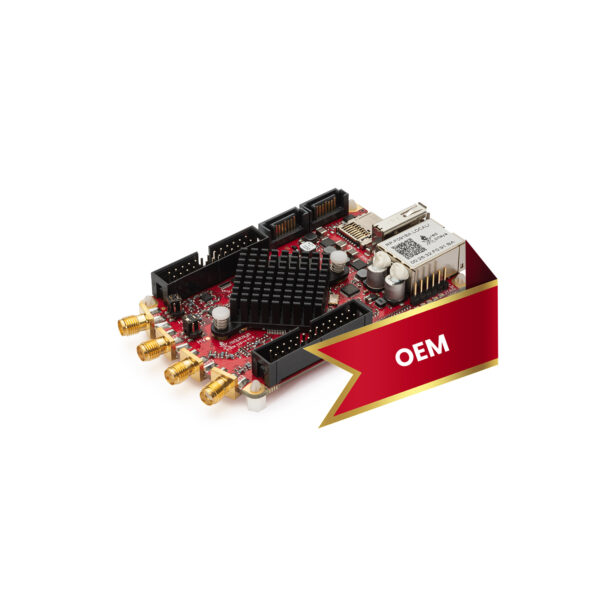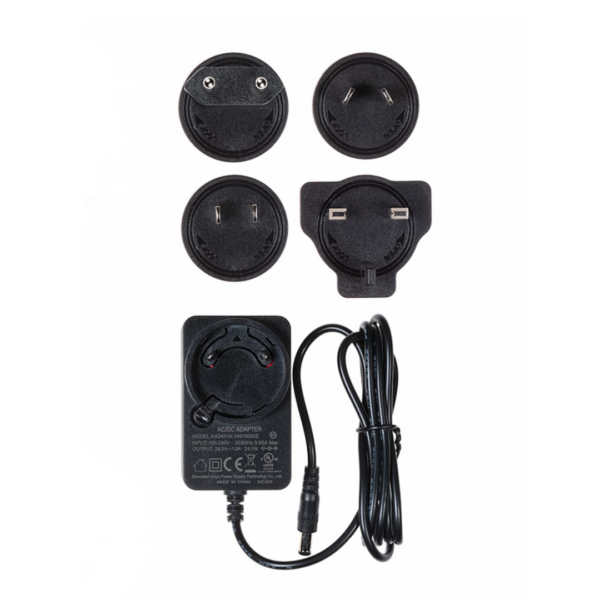For more information please refer to the documentation available here.
MikroE Click Boards Compatibility
The main feature of the Red Pitaya Click Shields is upgrading your Red Pitaya board with two MikroE Click board™ devices. With over 1500 different Click Board available, this opens up endless hardware extension possibilities. From additional ADC and DAC channels, GPS, Wi-Fi, and other communication modules to simple temperature sensors. With the help of bidirectional level-shifting voltage translators, you can use any Click board™, regardless of whether it operates at a 3V3 or 5V logic voltage range.
Additionally, all MikroE Click boards™ have the same standard mikroBUS™ pinout, allowing you to easily swap one for another, making the Click Shield a versatile and reusable add-on for your Red Pitaya board.
Clock and trigger synchronization
Red Pitaya Click Shield provides endless flexibility when dealing with clock and trigger synchronization. The Click Shield utilizes the U.FL connector standard for connecting clock and trigger signals. Here are the options:
– Connect an external clock source to the Click Shield
– Use the Click Shield 125 MHz on-board oscillator
– Transmit the Click Shield clock signal to other devices
– Connect an external trigger source to the Click Shield
– Share the Red Pitaya’s trigger signal with other devices
The connection provides minimal clock signal delay between multiple Red Pitaya units, providing synchronization that’s even better than the Red Pitaya X-Channel system. The same principle is applied to the external trigger.
Using the U.FL connector standard, sharing the clock and trigger signals between multiple Red Pitaya units and other devices becomes trivial.
External power
Powering your Red Pitaya is also easier. With a Red Pitaya Click Shield, the previous restrictions are gone – you can now power the Click Shield and the Red Pitaya board with a wide voltage range from 12 V to 24 V DC or use a USB-C external power supply. Consequently, you do not have to rely on the original Red Pitaya power supply but can use a better power supply if available.
Logic analyzer
Do not worry about being incapable of using the Logic Analyser. We took special care to connect the Red Pitaya GPIO pins to a special Logic Analyser connector. Thus, even with a Click Shield, the utility of spying on CAN, SPI, UART, or I2C signals is intact.
To lower the learning curve and get you jumpstarted, we prepared detailed documentation regarding the pin connections between Red Pitaya and Click Shield, as well as some examples of how to get started in C and JupyterLab. Find more development information and code examples here.



























Reviews
There are no reviews yet